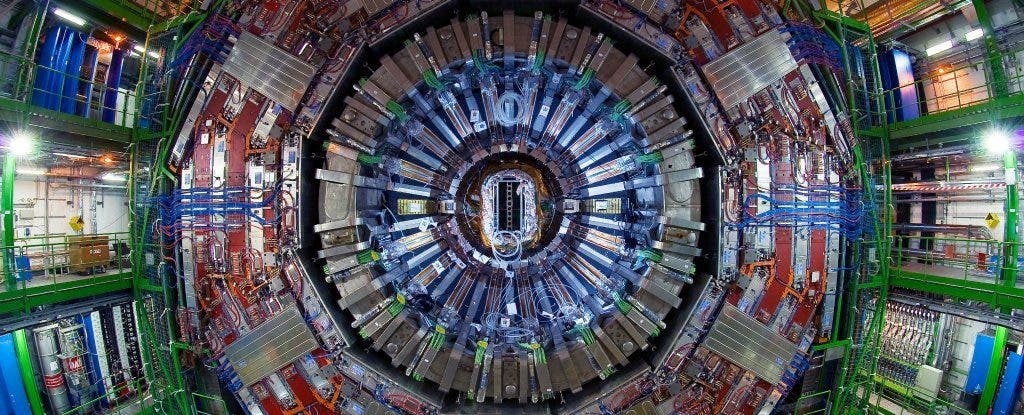We can’t call it a major discovery. Not yet. However, there are some indications that researchers working at the Large Hadron Collider (LHC) have discovered something beyond our current understanding of Physics – something that’s outside the Standard Model.
“To put it in terms of the cinema, where we once only had a few leaked scenes from an much-anticipated blockbuster, the LHC has finally treated fans to the first real trailer,” says Prof. Mariusz Witek (IFJ PAN), one of the members of the team that made the discovery.
The LHC is the world’s largest and most powerful particle collider, the largest, most complex experimental facility ever built and the single largest machine in the world. With it, physicists hope to uncover some of the most daunting secrets of the Universe and to better understand the sub-atomic particle world, which governs interaction between all types of matter.
The Standard Model is a theory that attempts to classify all the subatomic particles in the world, as well as the interactions between them. So far, everything that the LHC found confirmed the Standard Model, including the famous Higgs Boson – one of the pivotal points of particle physics. But this was bound to happen at some point. The Standard Model is incomplete, and there are significant gaps in our understanding of physics. Most notably, the model doesn’t account for gravity at all, which leaves a shed load of unanswered questions.
“Up to now all measurements match the predictions of the standard model,” said lead researcher Mariusz Witek, from the Institute of Nuclear Physics of the Polish Academy of Sciences. “However, we know that the standard model cannot explain all the features of the Universe. It doesn’t predict the masses of particles or tell us why fermions are organised in three families. How did the dominance of matter over antimatter in the universe come about? What is dark matter? Those questions remain unanswered.”
The discrepancy deals with particle called the B meson, a meson composed of a bottom antiquark and either an up, down, strange or charm quark — yes, those are real names and yes, particle physics is strange. The Standard Model predicts very specific decay frequencies and angles, but the theory doesn’t match the observations, so something else is at work.
At this point, it absolutely has to be said that this is not a confirmed discovery. We need more data to be sure that what’s found is for real. However, if it does turn out to be real, it means we may be dealing with a completely new particle. We’re going to have to wait for confirmation, and that may take a while.
“Just like it is with a good movie: everybody wonders what’s going to happen in the end, and nobody wants to wait for it,” says Witek.










